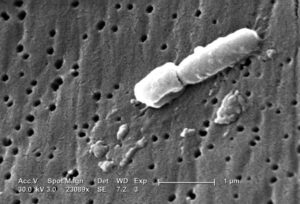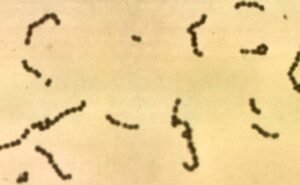In this article, we’ll study some Non motile Bacteria Examples and their facts.
Nonmotile bacteria do not have the ability and features to push or move across their surroundings under their own strength. Nonmotile bacteria lack a flagellum(which allows bacteria to move). Although it is structurally absent in this case, resulting in no bacterial immobility. Here are some of the non motile bacteria examples that exhibit non-mobility features.
Bacteria are common, largely free-living microorganisms that are often made up of only a single cell or a unicellular organism. They make up a broad group of prokaryotes. The potential of bacteria to move freely using metabolic energy is known as bacterial motility. Bacteria are divided into two types depending on their mobility; motile and nonmotile bacteria.
Bacteria are prokaryotes that lack a true nucleus and other membrane-bound organelles. On the other hand, some bacteria have flagella, pili, and other components that enable them to move independently on any surface.
What is non motile bacteria?
Nonmotile bacteria do not have the ability and features to push or move across their surroundings under their own strength. Nonmotile bacteria lack a flagellum(which allows bacteria to move). Although it is structurally absent in this case, resulting in no bacterial immobility.
Motility is one of the qualities used to identify bacteria and indications of having structures such as peritrichous flagella, polar flagella, or a combination of the two. Though not being able to move may be considered a disadvantage, some nonmotile bacteria have features that allow them to connect to eukaryotic cells.
Bacteria without flagella, i.e. nonmotile bacteria, may, however, be able to move by the Gliding motility mechanism that implies the flexible movement of the entire cell.
Non motile Bacteria Examples
Here are some of the nonmotile bacteria examples that exhibit non-mobility features.
1. KlebSiella granulomatis
Klebsiella granulomatis belongs to the domain of bacteria, which can be found in abundance throughout nature. It’s a Gram-negative, rod-shaped, oxidase-negative bacterium with a polysaccharide-based capsule. It is either motile or nonmotile, depending on whether it has peritrichous flagella.

2. Bacteroides fragilis
Bacteroides are a species of the bacterium domain. It’s a Gram-negative, obligately anaerobic bacteria genus. Bacteroides species are non-spore-forming bacteria that lack flagella and cilia, immobilizing them. On the other hand, Peritrichous fimbriae are used for attachment to other molecular structures.
3. Streptococcus pneumoniae
Streptococcus is a gram-positive coccus or spherical bacteria genus found in the Streptococcaceae family. Streptococcus pneumoniae, also known as pneumococcus, is a Gram-positive bacteria. It is a diplococci type lancet-shaped bacteria that is usually encapsulated. It is a nonmotile bacteria since it lacks flagella in its structure.
4. Coliform
Coliform bacteria, commonly known as indicator organisms, are Gram-negative Bacilli that do not generate spores. Such bacteria can be motile or non-motile.
5. Corynebacterium
Corynebacterium is a genus of Gram-positive bacteria, most of which are aerobic. It is a rod-shaped nonmotile bacteria that is linear or somewhat curled.

6. Shigella boydii
The Gram-negative bacterium Shigella boydii belongs to the Shigella genus. Shigella boydii is a nonmotile and non-flagellated bacteria.
7. Klebsiella pneumoniae
Klebsiella pneumoniae is a gram-negative, encapsulated, nonmotile bacteria that has been linked to pneumonia in patients with alcohol addiction or diabetes.
8. Shigella sonnei
Shigella sonnei is a Gram-negative bacteria that do not produce spores and is facultatively anaerobic. This type of bacteria is also nonmotile. Its nonmotile property implies that this species lacks flagella to support the movement, unlike many other human enterobacteria.
9. Yersinia Pestis
Yersinia Pestis is a gram-negative bacteria that can be rod-shaped or spherical. When it is present in a host, Yersinia Pestis is nonmotile, but it becomes motile when detached from the host.
10. Enterobacter aerogenes
Enterobacter aerogenes belong to the Enterobacteriaceae family and is a rod-shaped bacillus facultative anaerobic bacteria. Enterobacter aerogenes is a nonmotile bacteria that produce urease.

11. Anthrax bacterium
Bacillus anthracis is a Gram-positive, nonmotile bacteria that form spores. It is nonmotile in any way. Among Bacillus species, Bacillus anthracis is a unique feature of bacteria.
12. Salmonella gallinarum
Salmonella Gallinarum is a deadly bacterial pathogen. It is a nonmotile bacterial pathogen that infects galliform birds and cattle.
13. Salmonella pullorum
Salmonella pullorum is a poultry pathogen that has adapted to its host. It is identified as a nonmotile and non-flagellated bacterium.
14. Streptococcus agalactiae
Streptococcus agalactiae is a Gram-positive, non-sporing, catalase-negative, and nonmotile Streptococci found in sets or chains.
15. Streptococcus gallolyticus
S. bovis is another name for Streptococcus gallolyticus. It is a Gram-positive, non-spore-forming, nonmotile kind of Streptococci bacterium.

16. Shigella flexneri
Shigella flexneri is a Gram-negative bacterial pathogen that leverages actin-based motility to develop straight in the cytoplasm of contaminated host cells. It is a nonmotile, non-flagellated bacterium that infects the mucosa of the human colon.
17. Shigella dysenteriae
Shigella dysenteriae is a Gram-negative, facultatively anaerobic, nonmotile, and rod-shaped bacterial genus.
18. Staphylococcus aureus
Staphylococcus aureus has long been thought to be a nonmotile bacteria. S. aureus has recently been demonstrated to increase over agar surfaces in a technique known as passive spreading. As a result, it is a motile and nonmotile bacteria.
19. Haemophilus influenzae
Haemophilus influenza is a Gram-negative coccobacillus bacteria encapsulated, non-spore-forming, and nonmotile in feature. It can cause severe pneumonia and other potentially fatal infections.
20. Clostridium perfringens
Clostridium perfringens is a gram-positive anaerobic bacteria that is rod-shaped and nonmotile. It is a pathogen that affects both humans and animals. Regardless of their lack of flagella, they can nonetheless migrate over surfaces by employing a gliding motility mechanism.

21. Escherichia Coli
Escherichia Coli can be motile or nonmotile, producing lateral rather than polar flagella when motile. Only the A-D group of E-coli bacteria can be nonmotile, whereas the other E-coli groups are motile in structure and have flagella. It makes big flagellin, organized into active flagellum fibres that allow bacteria to float in improved motility agar.
22. Haemophilus parainfluenzae
The Gram-negative bacterium Haemophilus parainfluenzae belongs to the Pasteurellaceae family. It’s a nonmotile, microscopic, facultatively anaerobic bacteria.
Please click to learn more about Non Capsulated Bacteria.
Also Read:
- Is fungi multicellular or unicellular
- Is bacteria multicellular
- Do eukaryotes have plasmids
- Brain anatomy
- Is mitochondria the powerhouse of the cell
- Hypogynous flower example
- Do eukaryotic have enzymes
- Is endocytosis hypertonic
- Deltoid muscle
- Are proteins polymers
Hey! I’m Roshny Batu. I got a Bachelor of Science degree in Botany. In the domain of academic writing, I consider myself fortunate to be a part of the Lambdageeks family as an SME in Bio-Technology. Apart from that, I love designing interiors, painting, and mastering makeup artist skills.